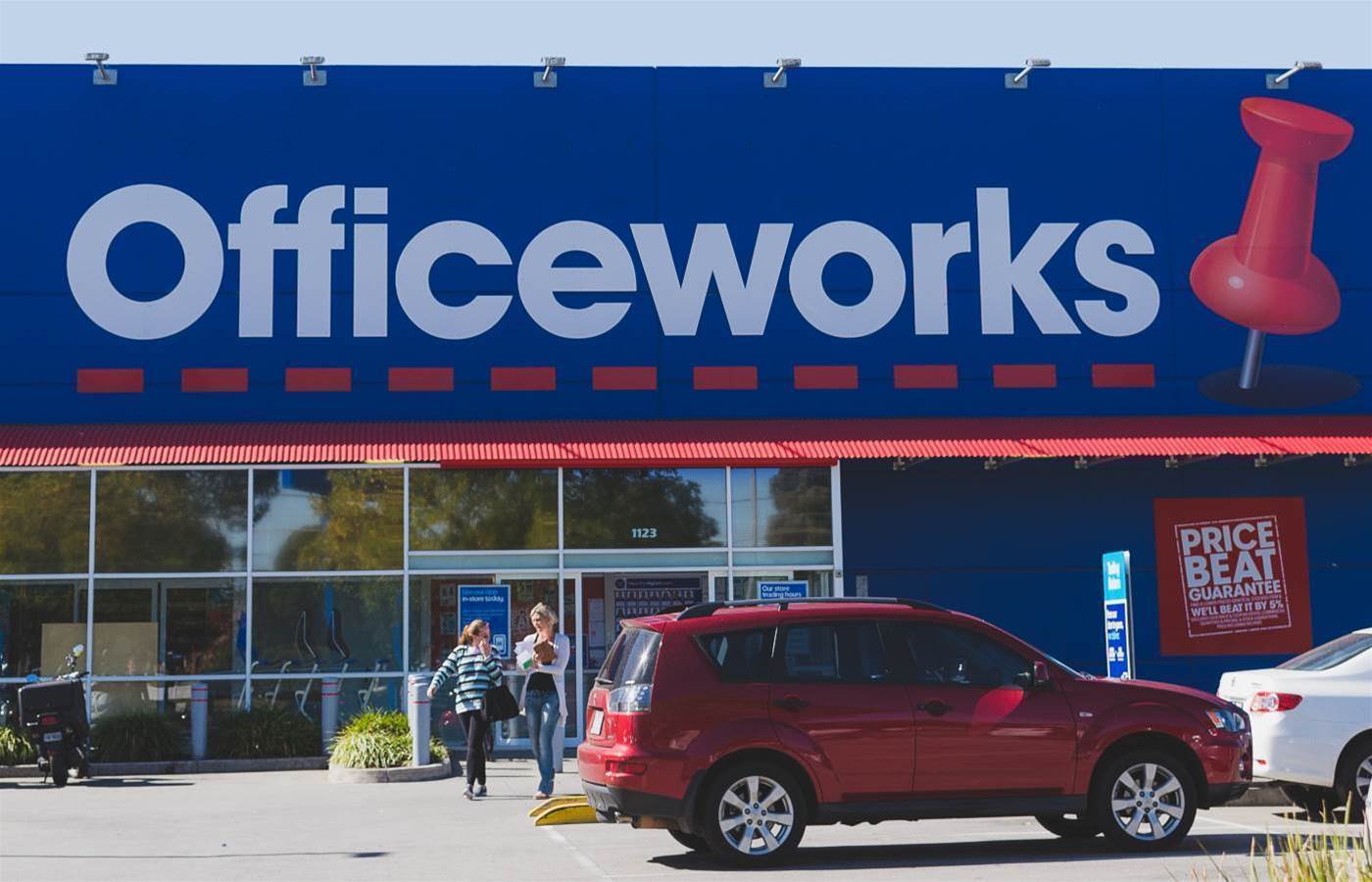
Officeworks is using data and analytics to personalise marketing content to individual consumers, act on customer feedback quickly, replenish stock efficiently and price its products competitively.

The Wesfarmers subsidiary – over the past two years – has added millions of individual customer profiles to its customer data and analytics platform.
It has also deployed two platforms, for customer feedback management and for demand forecasting and supply planning, and hired more data, technology, and digital marketing professionals.
Officeworks managing director Sarah Hunter said last month that current, recent and historical investments in the retail giant’s data and analytics assets had helped improve the retailer’s net promoter score (NPS) and increased in-store and online sales.
“The data and insights have added hundreds of millions of dollars in revenue to our business…helped generate over $400 million in sales through social channels alone in the last year” and “doubled our NPS,” she told the 2023 Melbourne Business Analytics Conference.
Hunter said that the 29-year-old company’s current analytics projects were built on top of older, more foundational data assets that Officeworks had invested in over the last two decades.
These included the retailer’s first data warehouse in 2003, its first transactional website in 2006 and its first customer data and analytics platform in 2019.
The current projects were also only possible because of the retailer’s experience in earlier data and analytics initiatives, Hunter added, such as an automation tool launched in 2017 that scrapes competitors’ product prices “twice a day” from online catalogues and prices Officeworks’ own products five percent below them.
Millions of unique customer profiles enable targeted marketing
When Hunter was appointed in January 2019, “the way that we did marketing was catalogues and TV advertising,” she said.
By building millions of 360-degree customer profiles on a data and analytics platform launched in 2019, Officeworks had since redirected more of its advertising resources towards personalised content.
“We haven’t increased our marketing budget for four years but we have repurposed it,” she said.
Officeworks’ customer data and analytics platform uses a machine learning model built in Amazon SageMaker, which is fed customers’ purchase history, product preferences, and product characteristics; these features are tracked and collected across the shopper’s different online and in-store interactions with Officeworks.
“How we shop isn’t just online or just in-store or just with one B2B relationship manager, and we don’t always shop in the same store or at the same time of the day,” Hunter said.
“In the last year alone, through our socials marketing – so not our digital marketing but our socials marketing; and the personalisation that we generated from the data that we have, we now have a huge amount of data – we have over 4.5 million known marketable customers with consent.
“And I can tell you that 9 million Australians – individual different Australians – shopped in our stores in the last 12 months.”
Hunter added that the customer data and analytics platform’s “purpose was always to know our customers better; because if we know our customers better we can market to that customer through better-personalised experiences”.
The platform’s output includes product recommendations targeted to individual customers.
“Let’s say that we knew that customer bought a Surface [device] – because they scanned a FlyBuys card or their Officeworks account card [at the point-of-sale]. then we can send them an email saying, ‘Would you like some accessories with that?’” she said.
“It’s not always the smart, fancy stuff that makes a real difference commercially; it’s actually just the logical understanding of how customers shop, and that customers don’t always remember to buy the [extra] cable… so we make it easy and engaging for them by selling them what they need, when they need it.”
Hunter added that, in addition to the platform, Officeworks also had to invest in more technical skills to transition to more targeted marketing.
“We have about 800 people in our support centre supporting our teams, and that also includes the team that works on our digital platforms.
“Of those 800 people in our support centre, more than 500 of them are working somewhere in data, digital, technology, insights and digital marketing.”
Harnessing customer feedback data
Hunter said that Officeworks had automated how it analyses customer feedback.
Previously, interpreting and acting on the company’s “NPS was something that was done very manually by a bunch of our team who would sit and code keywords,” she said.
“We’re on our way to tripling NPS – and a great example of why is using text analytics tools, and on the back of that, we’re using the insights much more easily.
“In fact, [we’re working with] Medallia who use AI and machine learning that we’re rolling out to all of our store teams so that they will be able to see their NPS in real-time and understand what’s driving the root cause of the feedback they’re getting in their store.”
Hunter said that 18 months ago, Officeworks also applied customer feedback insights to “the click-and-collect experience.”
“Customers love click-and-collect; the locations are in good places; we’ve got great parking; one of their favourite things is to go online and order so they know they’re going to get it when they come in.”
However, one of the most common pieces of user feedback Officeworks received about the service was that customers still felt that they could have bought the product faster if they had gone to the shop without pre-ordering.
“You come to the front of the store and you stand there and then you go and look for someone. On average, you’re waiting about three to three-and-a-half minutes: not good!
“So we invested in something called ‘I’m on my way’ which is a great little piece of technology that means that when you order click-and-collect, you get an email and SMS that says, ‘Let us know when you’re on your way’.”
Hunter added that the customer’s notification that they’re on their way automatically alerts the staff at the store over a system that instructs them over their headsets.
“We reduced click-and=collect wait times by two-thirds and increased NPS by 77 percent, and we would never have made that decision if we didn’t have the data.”
Boosting supply chain management with predictive analytics
Officeworks is collecting, analysing and acting on more data accross its supply chain management, demand forecasting and warehouse and in-store stock replienishment.
The company is currently rolling RELEX out to its 166 stores and seven distribution centres in Australia to get more insight into shelf availability, which could reduce inventory levels required.
The partnership – first announced in April – “is the largest single project from a dollar cost perspective we’ve ever done in Officeworks’ history,” Hunter said.
The partnership is intended to streamline Officeworks’ complex inventory processes, reduce complications when managing the supply of products with long lead times, lower customer delivery delays and cut working capital and operational costs.
Hunter said RELEX “will help us bring the right range into the right store for the right customer at the right time, and take costs out of filling shelves, so we can put them into serving our customers.”
She did not share many details on the platform’s capabilities or how it works – saying: “I’m conscious that this is a competitive environment and I can’t let all the secrets out of the bag,” – but broadly summarised its expected outcomes.
“We are going to transform the supply and demand planning tree from the flow of stock from the supplier all the way through to when it lands in a customer’s hand.
“Some of our competitors, particularly pure-play online [firms] are really good at this. For example, if you are browsing on an Amazon website and they know that you’re hungry – it’s a little creepy- but they’re probably already taking it and putting it in your basket even though you haven’t put your credit card details in.
“We’re not going that creepy – but we’re going to go pretty smart here.”
The improved supply chain mangement efficiencies would also have environmental benefits, she said.
“This will help us reduce our scope one, scope two and scope three emissions…this will help us know the component tree that we need to order so we reduce waste to landfill.”
Scraping competitors’ sites “twice a day” for price beat guarantee
Hunter said that Officeworks had worked on “understanding and knowing how our customers through how they transact with us for a very, very long time.”
In 2003 Officeworks launched its first data warehouse – a SAP Business Warehouse called “Merchworks” – Hunter said that SAP “is still the backbone of how we run our business today.”
“We recognised that customer data and first-party customer data were going to be critical to retail in the future.”
The next step was launching Officeworks’ first transactional website in 2006.
“In the last year, our website has made over a billion dollars in sales; it’s our biggest store.”
Hunter said that “another practical example of how we’ve been driving customer insights into actions” was when the company deployed scraping technology to progress its flagship “price-beat guarantee” from being reactive to proactive.
Hunter said that the 15-year-old policy – “if you come into Officeworks with a rival company’s catalogue showing you can buy the same product somewhere else and it’s cheaper then we’ll beat it by five percent” – was transformed in 2017.
“About six years ago we started scraping prices; we invested in some technology because we thought, ‘Well actually that’s really reactive’; if we knew what was happening online we’d be able to anticipate those price changes and proactively price speed; and now we proactively price check twice a day,” she said.
The upgrade was imperative for two reasons. Firstly, if customers were finding Officeworks’ competitors offering cheaper products online they would buy from the rival office supplier instead of asking for the price-beat guarantee.
“It needed to be in real-time; we live in a world where people check prices on their phones all the time,” Hunter said.
“Ninety-four percent of our customers start their journey by shopping with us online or on a mobile phone; that’s where they start even though a lot of them still end up in-store.”
Secondly, Officeworks needed to automate setting prices lower than its competitors because the human resource costs of constantly digging through rivals’ catalogues would be too high.
“We couldn’t do it with people… it would have just been too many people and just too expensive to do.”






%20v1.1.jpg#keepProtocol)